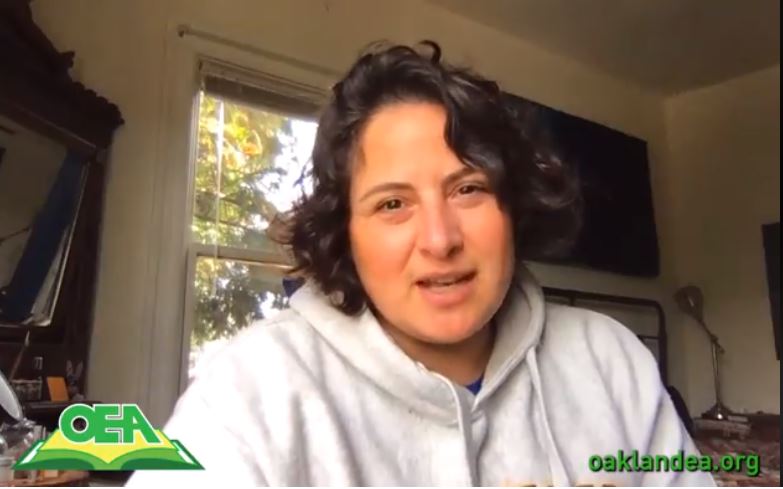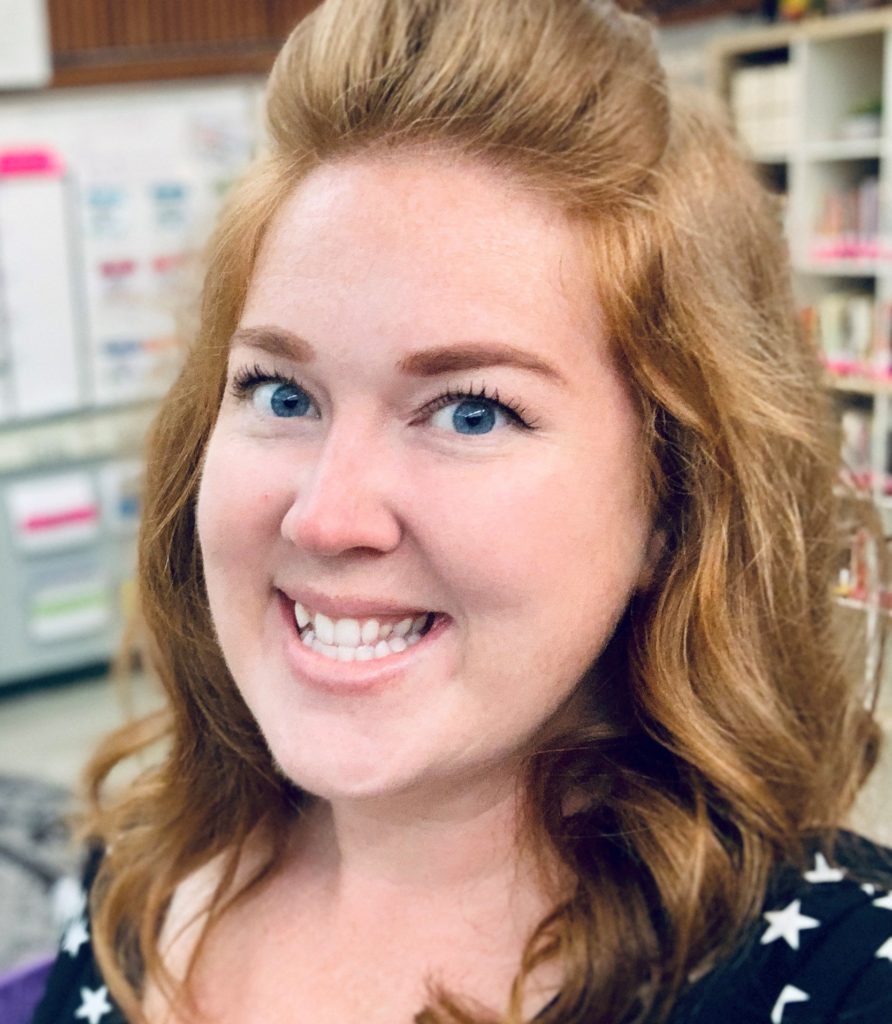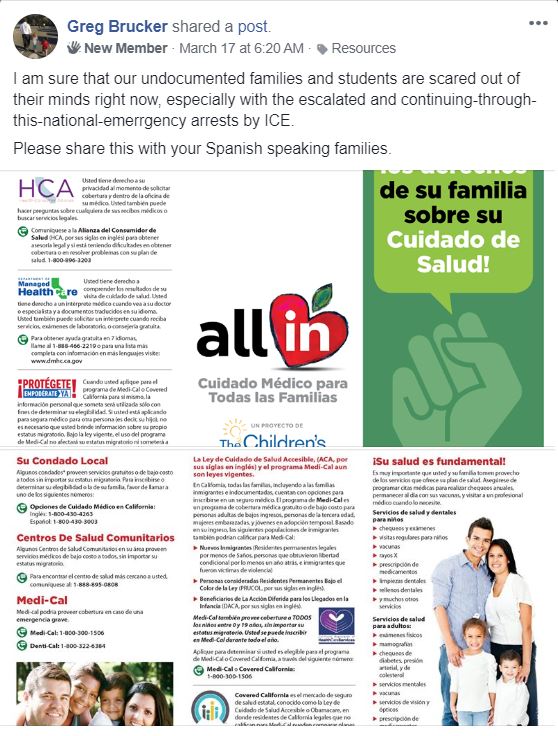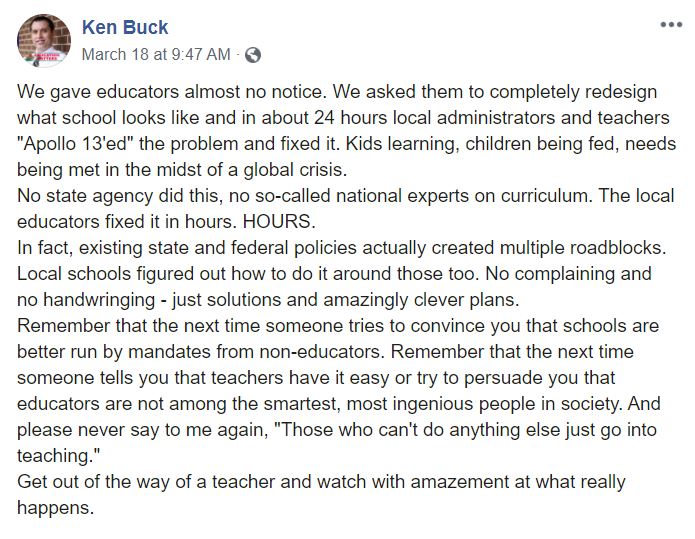“Educators throughout the state, who are balancing the impact of COVID-19 on their own lives and families, continue to act, educate and advocate for their students during this crisis.”
—CTA President E. Toby Boyd
Educators are creative problem-solvers. When asked to minimize adverse impacts on their students, they focus their creative energy on finding swift solutions.
Nowhere has this been more evident than in the COVID-19 pandemic, where educators, faced with the sudden closure of their schools, rushed to find alternative ways to connect with their students and continue teaching.

“Like everyone in education, we persevere,” said Ashley Wallace in an NEA Today story, speaking of the quick pivot she and other Oakland educators did in a matter of hours when their schools were shutting down.

The Oakland Education Association member worked with colleagues to make sure students had access to food and technology, and called families to tell them what was happening and what to do in case of illness or other problems — no small feat in a multicultural community where English is often not the primary language spoken at home.
CTA President E. Toby Boyd praises the fortitude and selflessness of members. “Educators throughout the state, who are balancing the impact of COVID-19 on their own lives and families, continue to act, educate and advocate for their students during this crisis.” He wants members to know that the union has their back. “CTA is here to support you as we move through this crisis together. Remember: We’ve got this!”
“Get out of the way of a teacher and watch with amazement at what really happens.”
—Ken Buck, school board member in Lancaster County, South Carolina, in a viral Facebook post

Soon after many districts shut down, CTA set up “Teaching, Learning & Life During COVID-19,” a Facebook group for educators to tap into one another’s ingenuity and passion. The page garnered thousands of members within days, and quickly became a forum on how educators can deliver effective instruction during the outbreak. The space is an incubator for ideas and a clearinghouse for issues and concerns about COVID-19 and ongoing governmental, educational and medical changes.
For example, on the Facebook page, California educators expressed immediate alarm about the impact on students with special needs, who are particularly dependent on face-to-face instruction and one-on-one support. Guaranteeing a free appropriate public education (FAPE) is a challenging enterprise in the best of times; sequestration of students makes that task even harder.
Special educators asked for and received information from their peers on moving to online teaching platforms and how to deliver appropriate special education services. This work lessened the stress and strain on families throughout the state.

Examples of outreach and support accessible to educators on the Facebook page include:
- Math resources for distance learning,
- Online storytelling in multiple languages.
- Virtual field trips.
- Webinars on online teaching.
- At-home science activities.
- At-home exercise routines.
While the page is a showcase of collaboration and generosity of spirit, it is also a space where educators can commiserate, occasionally vent, and share a laugh and some virtual tears. The support and service many give and receive is a tangible confirmation that “We’re all in this together.”
Featured photo: CAVA teacher and CVEU President Brianna Carroll. Credit: Scott Buschman
“The smartest, most ingenious people in society”
Ken Buck, a school board member in Lancaster County, South Carolina, spoke for every American family in a viral March 18 Facebook post about what educators across the country had accomplished in the past week.

How We Got Here
The first case of COVID-19 was identified in Wuhan, China, in November, and the virus’s spread caused massive government, city and manufacturing shutdowns across China. In December and January COVID-19 spread through Europe and the Middle East. Travel restrictions were put in place outside of Asia.
America watched the crisis unfold, seemingly untouched behind ocean barriers as death tolls climbed in every region and city where the virus found a foothold. This time lag bred complacency. It wasn’t until Jan. 20 that the U.S. had its first case, and no significant measures (except the ban on flights from China to the U.S.) were taken, even as the World Health Organization declared a pandemic on Jan. 30. The first death in the U.S. was recorded on Feb. 29.
Thankfully, California and then federal authorities began to take action. Emulating South Korea, which had successfully “flattened the curve” of infection to keep its health care system from being overwhelmed, public health officials in the U.S. urged limits to public gatherings, and later the closing of all nonessential businesses and workplaces, and schools and colleges. On March 13, CTA called for all public schools to be closed in the interest of the health and safety of students, educators and the public.
Over the March 14 weekend, teachers and education support professionals throughout California began to receive notices of temporary district closures from education and county health officials. At present, it’s unclear when or if schools will reopen this academic year.
The Discussion 0 comments Post a Comment